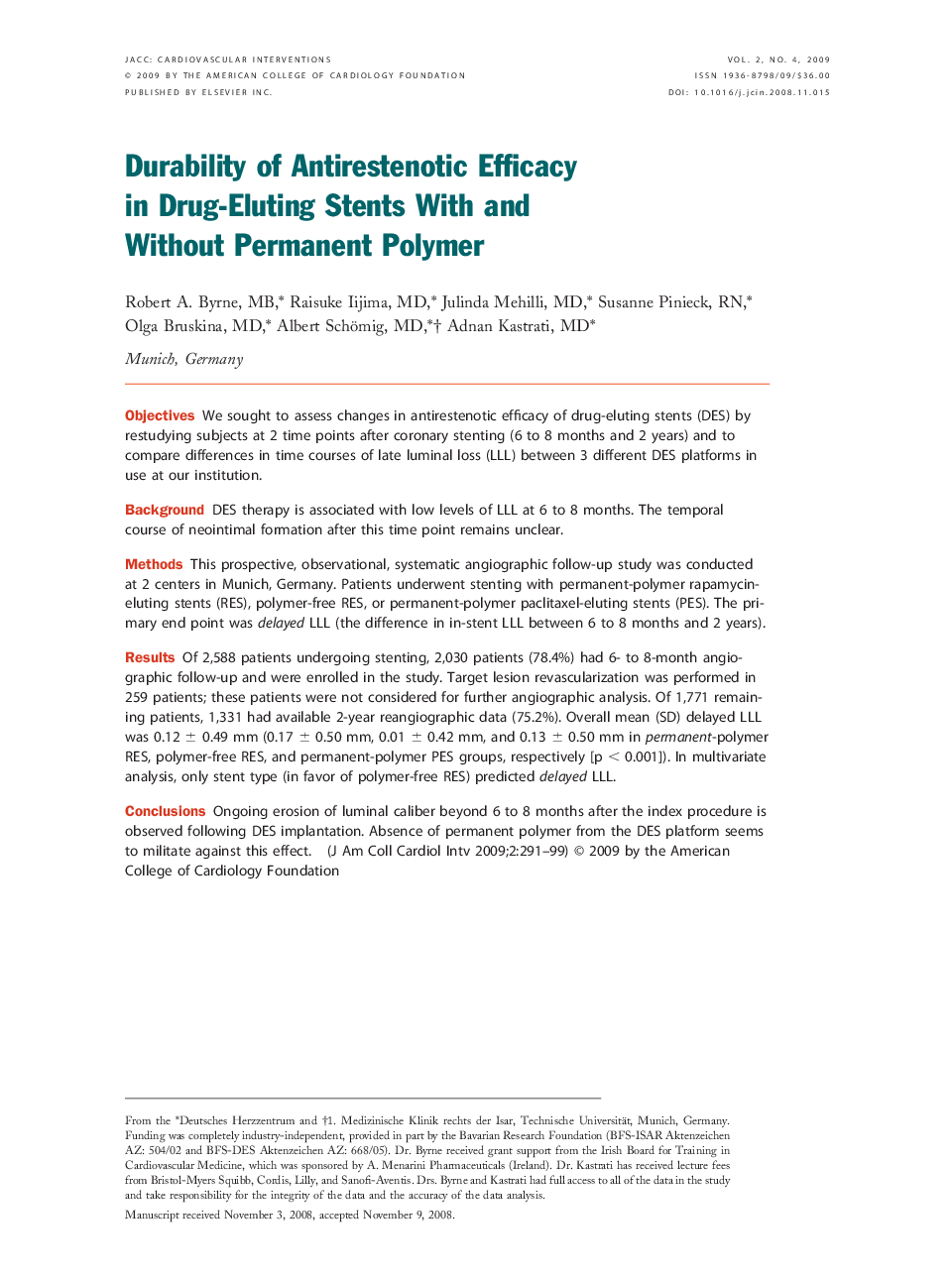| Article ID | Journal | Published Year | Pages | File Type |
|---|---|---|---|---|
| 2941630 | JACC: Cardiovascular Interventions | 2009 | 9 Pages |
ObjectivesWe sought to assess changes in antirestenotic efficacy of drug-eluting stents (DES) by restudying subjects at 2 time points after coronary stenting (6 to 8 months and 2 years) and to compare differences in time courses of late luminal loss (LLL) between 3 different DES platforms in use at our institution.BackgroundDES therapy is associated with low levels of LLL at 6 to 8 months. The temporal course of neointimal formation after this time point remains unclear.MethodsThis prospective, observational, systematic angiographic follow-up study was conducted at 2 centers in Munich, Germany. Patients underwent stenting with permanent-polymer rapamycin-eluting stents (RES), polymer-free RES, or permanent-polymer paclitaxel-eluting stents (PES). The primary end point was delayed LLL (the difference in in-stent LLL between 6 to 8 months and 2 years).ResultsOf 2,588 patients undergoing stenting, 2,030 patients (78.4%) had 6- to 8-month angiographic follow-up and were enrolled in the study. Target lesion revascularization was performed in 259 patients; these patients were not considered for further angiographic analysis. Of 1,771 remaining patients, 1,331 had available 2-year reangiographic data (75.2%). Overall mean (SD) delayed LLL was 0.12 ± 0.49 mm (0.17 ± 0.50 mm, 0.01 ± 0.42 mm, and 0.13 ± 0.50 mm in permanent-polymer RES, polymer-free RES, and permanent-polymer PES groups, respectively [p < 0.001]). In multivariate analysis, only stent type (in favor of polymer-free RES) predicted delayed LLL.ConclusionsOngoing erosion of luminal caliber beyond 6 to 8 months after the index procedure is observed following DES implantation. Absence of permanent polymer from the DES platform seems to militate against this effect.
